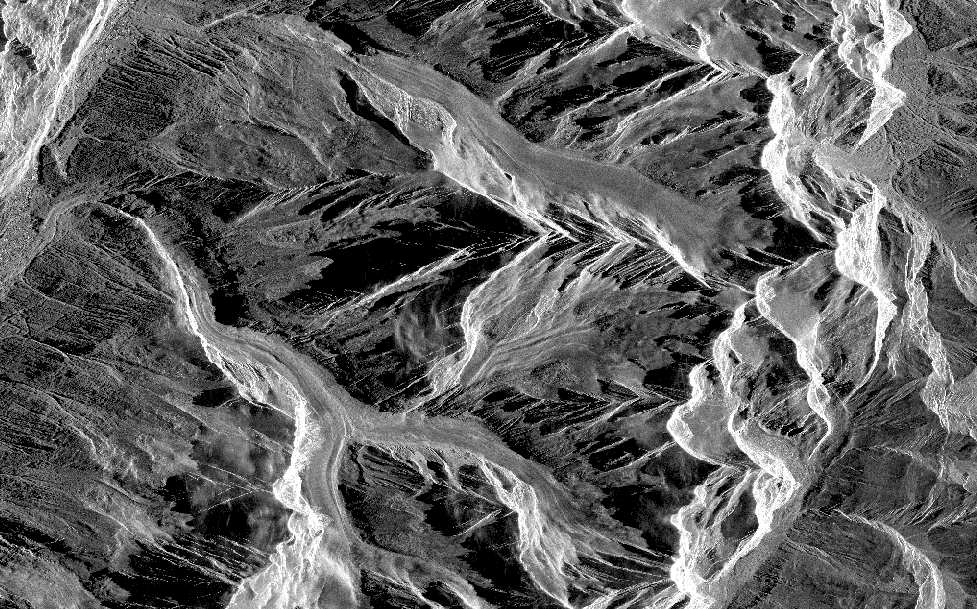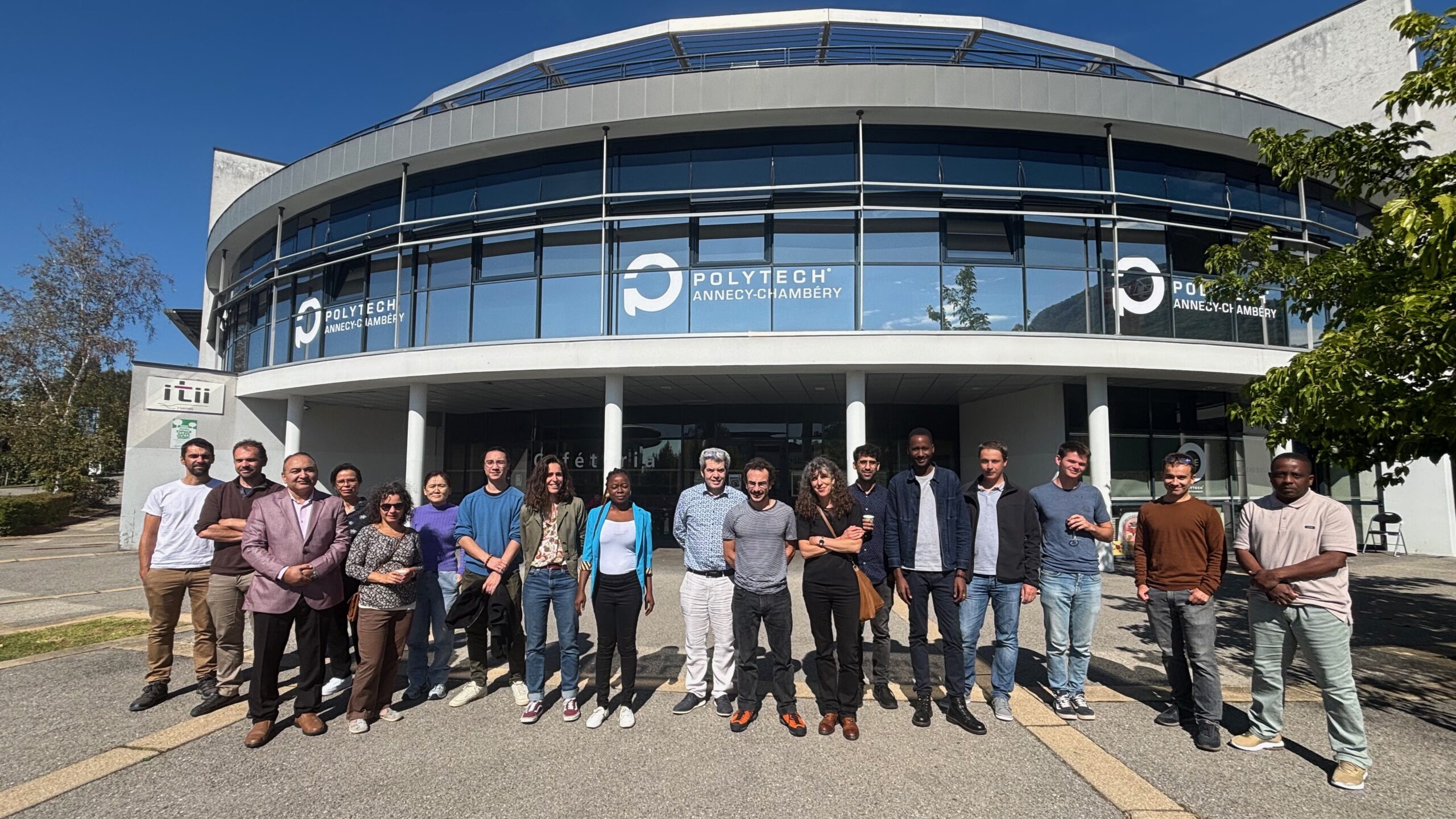


Journée colabellisée par le GdR IASIS et le COMET Traitement du Signal et des Images du CNES avec le soutien de Polytech Annecy-Chambéry, Université Savoie Mont Blanc.
Description
La télédétection est un outil primordial pour l’étude de l’évolution de la cryosphère : neige saisonnière, glaciers, pergélisol, glace de mer, de lac et de rivière… Le radar à synthèse d’ouverture (SAR) est une source d’informations régulières qui fournit des images de jour comme de nuit, indépendamment des conditions météorologiques. Ces données permettent à des échelles locales ou régionales de mesurer des paramètres physiques tels que la vitesse d’écoulement de surface des glaciers, les variations d’épaisseur ou encore de cartographier la neige humide. Mais la réponse des milieux neige/névé/glace aux ondes électromagnétiques est complexe et nécessite des travaux alliant traitement statistique du signal, modélisation et apprentissage automatique pour extraire des images SAR les informations recherchées.
L’objectif de cette journée est de présenter des avancées récentes dans l’exploitation des images SAR et leurs séries temporelles pour les applications liées à l’hydrologie et la glaciologie. Ces applications nécessitent des développements méthodologiques importants pour traiter de façon automatisée des masses de données colossales issues des archives des agences spatiales ou acquises périodiquement par les satellites radar actuels : les constellations Sentinel-1 et Radarsat en bande C, TerraSAR/Tandem-X, PAZ et CosmoSkyMed en bande X ou par la future mission NISAR (USA/Inde) en bande S et L. En rassemblant des chercheurs des domaines du traitement des images radar et des géosciences, cette journée permettra de croiser les dernières avancées méthodologiques avec les connaissances et les attentes des spécialistes de la cryosphère.
Orateurs invités
- Praveen K. Thakur, Indian Institute of Remote Sensing (IIRS), Dehradun, chercheur invité au LISTIC
- Fatima Karbou, Centre d’Etude de la Neige (CEN), Météo-France
- Florence Tupin (Télécom ParisTech)
Appel à communications
Nous lançons un appel à contributions pour les personnes souhaitant présenter leurs travaux sous forme de présentation orale. Les propositions (titre, résumé, auteurs, affectation) sont à envoyer par email à emmanuel.trouve@univ-smb.fr avant le mercredi 4 septembre 2024.
Organisateurs
- LISTIC : Emmanuel Trouvé, Ammar Mian, Yajing Yan, Abdourahmane M. Atto
- CNES : Nicolas Gasnier
Informations pratiques
- Lieu : Annecy, Polytech Annecy-Chambéry, 5 chemin de Bellevue, Annecy-le-Vieux
- Salle : B212 (Salle des conseils)
- Les pauses cafés et le repas de midi sont prévus et financés par le COMET
- Horaires : 10h-17h
- Lien Teams pour suivre en distanciel : Cliquer ici
Planning de la journée
Abstracts of presentations :
- Florence Tupin, « Deep learning methods for speckle reduction in multi-channel SAR images »
L. Denis, E. Dalsasso, C. Ulondu-Mendes, F. TupinIn the first part of this talk we will review some recent deep learning based methods for speckle reduction.Then we will focus on a new self-supervised approach called MuChaPro (Multi-Channel Projections)leveraging on single channel despeckling to handle multi-channel data.
- Praveen K. Thakur, « Current Status and Future Innovations in Space Based Observations for Cryosphere Research »
Satellite remote sensing continues to play an ever increasing, important and indispensable role in the regular mapping and monitoring of global cryosphere. The Polar ice-sheets, ice shelves, sea-ice, mountain glaciers and seasonal snow, and permafrost remains most sensitive and under constant scrutiny from the vagaries of global climate change. In this talk, I will highlight the main active and priority areas of research in cryosphere, and various physical principles and satellite sensors used for making observations of cryosphere components. Some of key research highlights from satellite based seasonal snow cover and snowpack monitoring and glacier dynamics of Himalaya shall be presented. The role of such observation in snow and glacier melt runoff models and inputs to water security of Himalayan Rivers will also be discussed. The use of SAR data for snowpack characterization and glacier dynamics studies along with role of machine learning shall be highlighted. The role of satellite observation in monitoring of snow/glacier hazards such as snow avalanches, rock/icefalls and glacier lake outburst floods shall be presented. The global space missions ongoing and planned relevant for cryosphere monitoring such as Scatsat-1, Sentinel-1, Radarsat, Icesat-1, 2, PLASR, NISAR, TRISHNA, CRISTAL shall be highlighted.
- Adina Racoviteaunu, « Spatio-temporal evolution of Glacier Facies in Himalaya using SAR Remote Sensing : examples from the Khumbu Himalaya »
Adina Racoviteanu, Baptiste Georjon, Aravind Manimaran, Jean-Pierre Dedieu
Understanding glacier behavior with respect to climate patterns and its impact on water resources required a detailed study of glacier surfaces (snow, ice, firn etc.). Such measurements are difficult to obtain in the field in remote and difficult to access regions such as the Himalayas, particularly in areas frequently covered by clouds such as the monsoon influenced part where optical remote sensing methods fail. Here we use Synthetic Aperture Radar (SAR) time series data from Sentinel-1 for the period 2017 to present explore glacier facies and transitional snow lines and their spatio-temporal evolution in the monsoon-monsoon-influenced area of Khumbu Himalaya, with a focus on the field-monitored Mera Glacier. We apply the Nagler ratio method to differentiate the various glacier facies and explore the seasonal variability of the ouputs and compare these with transitional snow lines detected from Planet/Venµs imagery (5 m spatial resolution) and spectral unmixing of Sentinel-2 data. We discuss current challenges associated with the use of SAR imagery in C-band to separate glacier facies in monsoon-dominated areas.
- Fatima Karbou, « Methods for monitoring snowmelt using SAR imagery »
This presentation will review some of the work undertaken to explore the potential of image segmentation methods applied to Sentinel-1 SAR images to improve snow detection. This includes addressing the criteria for selecting snow-covered pixels, selecting the reference image, and introducing new methodological developments that better account for topography.We will also discuss the value of monitoring snow elevations derived from satellite observations, particularly in monitoring snow retreat elevations/dates during the melt season and minimum and maximum wet snow elevations at the scale of mountain ranges. New approaches to derive this information directly, without snow detection, will be presented and their implications for merging images of different types and resolutions will be discussed.
- Abdourrahmane M. Atto, « Deep learning for snow analysis from multimodal remote sensing images »
Thu Trang Lê, Abdourrahmane M. Atto, Emmanuel Trouvé, Fatima Karbou
With the increasing accessibility of snow products derived from Synthetic Aperture Radar (SAR) and optical data, like Sentinel-1 wet snow and Sentinel-2 total snow, users have benefited from improved snow mapping and monitoring. However, snow mapping in the mountainous areas remains challenging due to the difficulty of obtaining reliable ground truth data on steep mountain terrain. Deep semantic learning frameworks are analyzed in this study to help in detecting wet snow in mountainous areas.
- Laurane Charier, « Glacier surges observed using SAR backscattering and image correlation »
Laurane Charier, Amaury Dehecq, Elise Colin, Lei Guo, Fanny Brun, Romain Milan et Luc Beraud
- Swann Briand, « Fusion de séries temporelles d’images de télédétection SAR et optique de résolution différentes pour le suivi de l’enneigement »
Le suivi de la couverture neigeuse par image de télédétection optique est une méthode utilisée et documentée, mais est souvent limitée par la présence de nuages. Le SAR d’un autre côté, malgré un temps de revisite plus long et une géométrie complexe, n’est pas sensible aux conditions météorologiques et permet retrouver des propriétés de la couverture neigeuse (hauteur, présence/absence de neige humide). Nous proposons d’utiliser cette richesse en information pour produire des cartes d’enneigement à travers une tâche de segmentation d’images SAR avec un réseau de neurones entraîné avec des données dérivés d’images optiques de MODIS. Dans ce contexte, nous étudions la quantité et la qualité de données nécessaire pour l’entraînement. Nous proposons différentes méthodes d’interpolation (interpolation linéaire, lissage de Kalman) des données optiques afin d’augmenter la quantité de données disponible, au détriment de la qualité. Nous étudions aussi l’influence de différentes combinaisons de canaux SAR en entrée du réseau. En particulier, nous souhaitons comprendre si des canaux directement représentatifs de la physique de la neige sont plus utiles que les canaux bruts dont ils sont dérivés.
- Yajing Yan, « Glacier thickness estimation at a regional scale with deep learning »
L. Lopez-Uroz, Y. Yan, A. Benoit, A. Rabatel, S. Giffard-Roisin
Mountain glaciers play a critical role for mountain ecosystems and society with major concerns related to their future evolution and related water resources. Modeling glacier future evolution allows anticipating climate change impacts and informing policy decisions. It relies on accurate ice thickness estimation at regional scales. We propose a deep learning based approach in a supervised learning framework for ice thickness estimation at a regional scale from surface ice velocity measurements and a digital elevation model. A neural network model built upon a ResNet architecture is proposed based on the trade-off between the model complexity and the prediction efficiency. Promising results are obtained from data including 1400 glaciers in the Swiss Alps, highlighting the potential of deep learning based approach for large scale ice thickness estimation.
